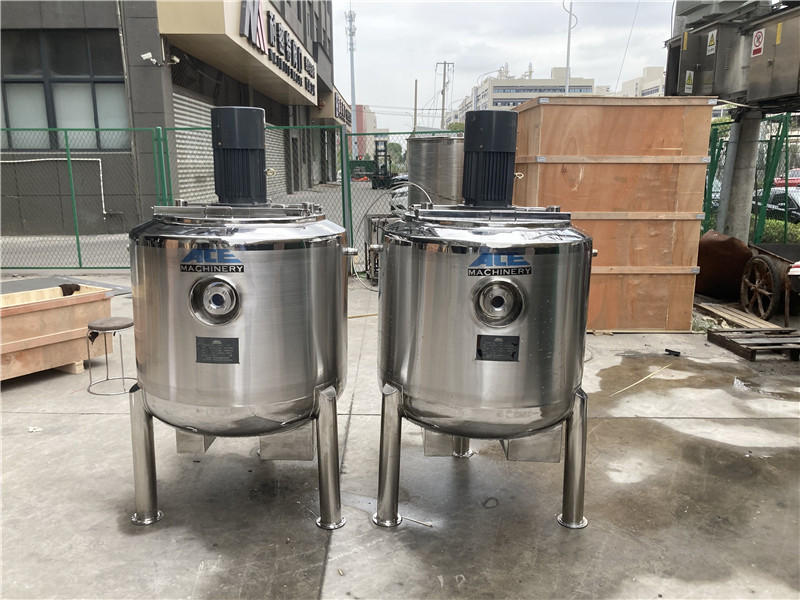Working principle of stainless steel mixing tanks
View:
A mixing tank is widely used in dairy, pharmaceutical, chemical, and other industries to mix liquid-liquid, liquid-solid, and different liquid-solid mixtures to meet the process requirements of qualified products. The tank (cover) body, upper and lower heads, stirring paddle (dispersion disk/emulsification head), support, transmission device, shaft sealing device, and other components make up the mixing tank. According to the process requirements, it can also be equipped with a heating (cooling) or measuring device.

1. The stirrer ensures effective material mixing, consumes the least power, has the lowest cost, is simple to operate, and is simple to maintain.
2. Determine the shape and size of the mixing vessel based on the production scale mixing purpose and material characteristics, such as no special needs and the available choice of vertical drum container, while determining the appropriate height-to-diameter ratio; such as heating or cooling requirements, the kettle must be set outside the jacket structure.
The operation of a stainless steel stirring tank.
The stirring paddle is driven by the power unit, rotating in a fixed direction; it causes the material to do axial and radial rotation during rotation. While there is axial and circular motion in the mixer, there are several types of mixing, such as shear and diffusion. It can quickly stir and mix materials.
Use of a stainless steel mixing tank
The design structure and configuration of a mixing tank, which is used to stir, mix, blend, and homogenize materials, can be standardized and humanized based on the requirements of the manufacturing process. In the mixing process, mixing tanks can be achieved through feed control, discharge control, mixing control, and other manual automatic controls. Structure of a mixing tank The mixing tank comprises the components: the mixing tank body, the mixing tank cover, the agitator, the support, the transmission device, the shaft sealing device, and so on. Depending on the process requirements, it can also be fitted with a heating or cooling device.
The tank body, cover, agitator, and shaft seal can be made of carbon steel or stainless steel, depending on the process requirements.
The stirring tank body and cover can be sealed together with a flange or welded connection. Feeding, discharging, observation, temperature measurement, pressure measurement, steam fractionation, safety venting, and other process pipe holes can all be accessed through the stirring tank body and cover.
The upper part of the tank cover has a transmission device (motor or reducer) that drives the stirrer in the tank via the transmission shaft.
The shaft sealing device can take the form of a mechanical seal or packing, a labyrinth seal, or something else (according to users' needs to determine).
Because of the various requirements of users' production processes, the agitator can be configured in multiple ways, including slurry, anchor, frame, and spiral. Please get in touch with our factory for custom design and production if you have any additional requirements.
